Click on images to enlarge

infestation (Photo: Sheldon Navie)

habit (Photo: Sheldon Navie)
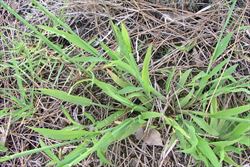
habit (Photo: Sheldon Navie)
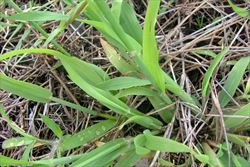
stems and leaves (Photo: Sheldon Navie)

younger leaves (Photo: Sheldon Navie)
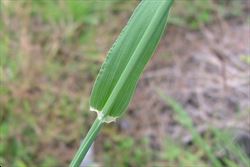
close-up of stem and base of leaf blade (Photo: Sheldon Navie)

young seed-head (Photo: Sheldon Navie)

close-up of immature seed-head (Photo: Sheldon Navie)
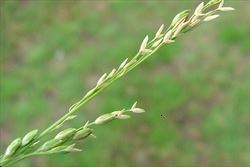
flower spikelets and persistent glumes (Photo: Sheldon Navie)

close-up of mature seed-head (Photo: Sheldon Navie)
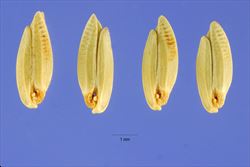
close-up of seeds (Photo: Steve Hurst at USDA PLANTS Database)
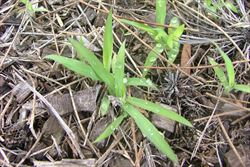
seedlings (Photo: Sheldon Navie)
Scientific Name
Ehrharta erecta Lam.
Family
Gramineae (South Australia)Poaceae (Queensland, New South Wales, the ACT, Victoria, Tasmania, Western Australia and the Northern Territory)
Common Names
panic veld grass, panic veldt grass, panic veldt-grass, panic veldtgrass
Origin
Native to southern and eastern Africa (i.e. Eritrea, Ethiopia, Somalia, Kenya, Tanzania, Uganda, eastern Zaire, Malawi, Zimbabwe, Botswana, Lesotho, South Africa and Swaziland) and the Arabian Peninsula (i.e. Yemen).
Naturalised Distribution
Widely naturalised in southern Australia, particularly in the south-eastern parts of the country. It is most common and widespread in New South Wales and Victoria. Also naturalised in south-eastern Queensland, south-eastern South Australia, Tasmania, the ACT, south-western Western Australia, and on Lord Howe Island.
Naturalised overseas in southern Europe, New Zealand, China, south-western USA (i.e. California) and Hawaii.
Notes
This aggressive, perennial grass is mainly regarded as an environmental weed in New South Wales, Victoria and Western Australia. It is almost constantly in seed and develops large populations very quickly. Because it is so prolific it dominates the ground layer in native vegetation, restricting the growth and regeneration of indigenous plants and eventually eliminating smaller native species. Panic veldtgrass (Ehrharta erecta) occurs in grassy woodlands, forests, heathland, riverbanks and coastal environs and often invades undisturbed natural vegetation. It grows vigorously in open areas and is also relatively tolerant of sheltered, moderately shaded conditions.
This species occurs on numerous local and regional environmental weed lists in southern Australia, particularly in eastern New South Wales and Victoria. It has also invaded numerous conservation areas in southern Australia (e.g. Lane Cove National Park in New South Wales, Morwell National Park and Philip Island Nature Park in Victoria, and Sturt Gorge Recreation Park in South Australia) and is listed a weed of endangered bangalay forest communities in the south-eastern corner of New South Wales.
Panic veldtgrass (Ehrharta erecta) is also widespread in New Zealand, where it has been described as having one of the most spectacular increases in abundance and range of any exotic species that has invaded this country. It invades a wide variety of habitats in highly-managed as well as non-managed areas, and invaded natural areas include off-shore islands, gaps in native forests, coastal bluffs and sand dunes.
In California, in the USA, it generally occurs in shaded habitats such as moist bushland and riparian areas, as well as in stabilised coastal sand dunes. Panic veldtgrass (Ehrharta erecta) can dramatically change the composition of plant communities in invaded habitats, altering the fire regime and increasing the rate of organic matter accumulation. Recent research in California also indicates an inverse relationship between the cover of native plants and panic veldtgrass (Ehrharta erecta).

